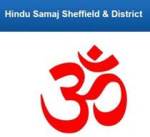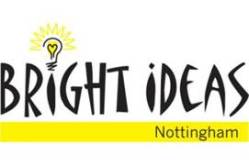Apologies for the break in posts – we’ve had a busy few months of archival research, stakeholder meetings and community events. Having just got back from holiday, which meant a break from work email and our project’s Twitter feed, I wanted to take the opportunity to get back to blogging with an account of some of our recent activities. More to follow soon.
Connecting with other organisations
Collaboration is central to our project, and shortly after our last blog post, Susanne and I made two important new connections – with the Arkwright Society, who own and manage Cromford Mill, and with a thriving community-based business in Nottingham called Bright Ideas.
Arkwright Society – working with heritage stakeholders
Our first meeting at the Arkwright Society was very positive. On Friday 4th April we met with Michael Ledger, the Society’s Education Officer, who received our project and its aims for community-based collaboration with great enthusiasm. Most importantly the meeting opened up an opportunity to engage with the current development of the Cromford Mill site, which in part aims to increase the heritage provision for the whole Derwent Valley Mills World Heritage Site through the creation of a ‘Gateway’ visitor centre at Cromford  Mill. Although at this initial stage it sounded as though we wouldn’t be able to contribute to the permanent displays in the centre itself, other opportunities to help shape the interpretation of the site were welcomed. Options we discussed that would enable visitors to explore the global connections of the cotton industry, including its colonial and slavery histories and legacies, included: creating a new guided walk; producing a set of temporary exhibition panels and leaflets; developing an object handling/memory box; contributing to the site’s on-line blog.
Mill. Although at this initial stage it sounded as though we wouldn’t be able to contribute to the permanent displays in the centre itself, other opportunities to help shape the interpretation of the site were welcomed. Options we discussed that would enable visitors to explore the global connections of the cotton industry, including its colonial and slavery histories and legacies, included: creating a new guided walk; producing a set of temporary exhibition panels and leaflets; developing an object handling/memory box; contributing to the site’s on-line blog.
This was a great start, but we weren’t naïve enough to think it would be plain sailing from herein out. Bringing a new set of interpretive perspectives, a new set of voices, to a site that is typically heralded for its role in Britain’s so-called ‘industrial revolution’ was never going to be easy. How to challenge a Whiggish history of ‘great men’ such as Arkwright? How to widen the horizons from a view centred on the Derwent Valley to its position in the truly global network of the cotton industry? Importantly, Susanne has been involved in thinking through some of these questions through her participation in the series of Derwent Valley Mills Research Framework meetings that took place March-May 2014. Funded by English Heritage as part of its programme of regional research frameworks, it aims to provide a Research Agenda and Strategy for the Derwent Valley Mills World Heritage Site and its wider Buffer Zone.
Connecting with communities – Hindu Samaj Sheffield & Slave Trade Legacies volunteers
Key to our plan for shaping interpretation at Cromford and the wider World Heritage Site are the local communities and community groups in Nottingham and Sheffield.
 Our Co-I Esme Cleall had previously worked with the Hindu Samaj on a Heritage Lottery Funded project called ‘British Raj in the Peak District: Discovering, Recovering and Sharing Colonial History’. This collaborative partnership was extended to the Global Cotton Connections project to enable the participation of members of Sheffield’s Indian community in exploring aspects of colonial history that link the physical and cultural heritage of the Peak District and Sheffield to their Indian heritage.
Our Co-I Esme Cleall had previously worked with the Hindu Samaj on a Heritage Lottery Funded project called ‘British Raj in the Peak District: Discovering, Recovering and Sharing Colonial History’. This collaborative partnership was extended to the Global Cotton Connections project to enable the participation of members of Sheffield’s Indian community in exploring aspects of colonial history that link the physical and cultural heritage of the Peak District and Sheffield to their Indian heritage.
Our hopes to connect with members of the Black British communities of Nottingham through our project so as to explore some of the slavery legacies of the cotton industry were boosted when Helen Bates, a freelance community historian working with us, introduced us to Lisa Robinson, Director of Bright Ideas. Offering a wealth of experience in community engagement in Nottingham, especially with those of African-Caribbean heritage, Bright Ideas has been an invaluable partner for the project, even though managing the expectations and needs of a University research project alongside those of a community business has not always been straightforward.
Offering a wealth of experience in community engagement in Nottingham, especially with those of African-Caribbean heritage, Bright Ideas has been an invaluable partner for the project, even though managing the expectations and needs of a University research project alongside those of a community business has not always been straightforward.
As part of the partnership with Bright Ideas, the Global Cotton Connections project teamed up with a Heritage Lottery Funded project that is also concerned with slave trade legacies and the ‘hidden histories’ of so much of Britain’s heritage landscape. Focusing on the heritage of the Black British Caribbean community, the Colour of Money project enables volunteers from this community to investigate how the lives of their ancestors were affected by the transatlantic slave trade, as well as considering how their enslaved ancestors contributed to the building of modern Britain.
You can read more about the Nottingham Slave Trade Legacies project activities through two blogs and a Facebook page:
- http://slavelegacies.wordpress.com/ – for updates on the research side
- http://slavetradelegacies.wordpress.com/ – for community volunteers’ updates
- https://www.facebook.com/cottonslavelegacies – please like!

